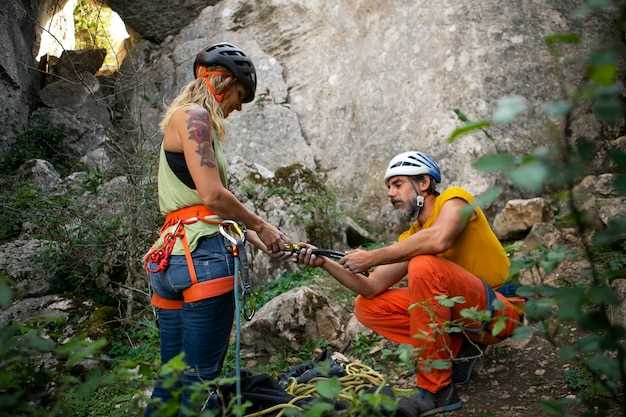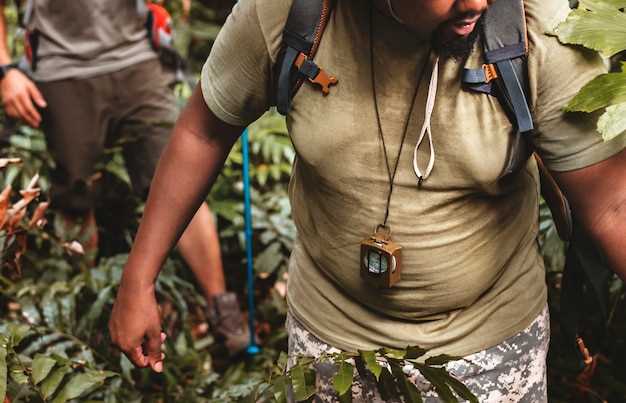
Embark on a journey to a land where nature’s magnificence remains unspoiled, where breathtaking landscapes and vibrant ecosystems await your exploration. Welcome to Haiti, a country brimming with awe-inspiring natural wonders and a commitment to preserving its pristine beauty for generations to come. In this article, we delve into the realm of sustainable travel and the various initiatives undertaken to safeguard Haiti’s remarkable environment.
As travelers, we have a responsibility to tread lightly upon the Earth, to appreciate and protect the delicate balance of ecosystems that thrive in Haiti’s diverse terrain. Sustainable travel, also known as eco-tourism, is a philosophy that harmonizes the desire to experience the wonders of nature with the imperative to conserve and protect them. It is a way of exploring the world that respects local communities, cultures, and the environment, ensuring that our presence leaves a positive impact.
Within Haiti’s borders lie an array of natural treasures, from lush rainforests teeming with exotic flora and fauna to pristine beaches caressed by crystal-clear waters. These invaluable assets have prompted the implementation of various environmental conservation initiatives, aimed at safeguarding Haiti’s biodiversity and promoting sustainable practices. Through the collaborative efforts of local communities, governmental organizations, and non-profit entities, these initiatives strive to strike a delicate balance between tourism and ecological preservation.
The Importance of Preserving Haiti’s Natural Beauty
Preserving the breathtaking natural landscapes of Haiti is of utmost significance for the long-term sustainability and prosperity of the nation. The unique and diverse ecosystems found within Haiti’s borders are not only a source of immense beauty but also play a vital role in supporting the livelihoods of local communities and fostering a sense of national identity.
Conserving Biodiversity and Ecosystems
Protecting Haiti’s rich biodiversity and fragile ecosystems is crucial for maintaining the delicate balance of nature. The country is home to a wide array of flora and fauna, including endemic species found nowhere else in the world. By safeguarding these natural treasures, we ensure the preservation of genetic diversity and the continuation of vital ecological processes.
Promoting Sustainable Development
Preserving Haiti’s natural beauty goes hand in hand with promoting sustainable development. By embracing environmentally friendly practices, such as responsible tourism and eco-friendly infrastructure, we can create a harmonious relationship between economic growth and environmental conservation. This approach not only safeguards the natural resources that attract visitors but also provides long-term economic opportunities for local communities.
Furthermore, sustainable development initiatives can help alleviate poverty and reduce inequality by creating jobs and empowering local communities to actively participate in the preservation of their natural heritage. By investing in sustainable tourism and environmental conservation, Haiti can unlock its full potential as a global destination while ensuring the well-being of its people and the protection of its natural wonders.
In conclusion, the importance of preserving Haiti’s natural beauty cannot be overstated. It is not only a matter of safeguarding the country’s unique ecosystems and biodiversity but also a means of promoting sustainable development and improving the lives of its people. By valuing and protecting Haiti’s natural heritage, we can create a brighter and more sustainable future for generations to come.
Sustainable Tourism: Balancing Economic Growth and Environmental Conservation
Ensuring the long-term viability of tourism while preserving the natural environment is a delicate balancing act. This section explores the concept of sustainable tourism, which aims to promote economic growth while minimizing negative impacts on the environment. By adopting sustainable practices, destinations can attract tourists while safeguarding their natural resources for future generations.
1. The Importance of Sustainable Tourism
Sustainable tourism recognizes the interdependence between economic development and environmental conservation. It acknowledges that tourism can bring economic benefits to a region, but also acknowledges the potential negative consequences such as pollution, habitat destruction, and cultural degradation. By implementing sustainable practices, destinations can mitigate these impacts and create a harmonious relationship between tourism and the environment.
2. Principles of Sustainable Tourism
- Environmental Stewardship: Sustainable tourism prioritizes the protection and preservation of natural resources, including land, water, and wildlife. It promotes responsible practices such as waste reduction, energy efficiency, and biodiversity conservation.
- Social Responsibility: Sustainable tourism aims to benefit local communities by involving them in decision-making processes and providing economic opportunities. It seeks to preserve local cultures, traditions, and heritage, while promoting respect and understanding among tourists.
- Economic Viability: Sustainable tourism recognizes the importance of economic growth and job creation. It seeks to maximize the positive economic impacts of tourism while minimizing the negative ones. This includes supporting local businesses, promoting fair trade, and ensuring a fair distribution of benefits.
- Visitor Education: Sustainable tourism emphasizes the importance of educating tourists about the local environment, culture, and customs. By raising awareness and promoting responsible behavior, tourists can become advocates for sustainable practices and contribute to the preservation of the destination.
By embracing sustainable tourism, destinations can strike a balance between economic growth and environmental conservation. This approach not only benefits the natural beauty of a place but also ensures the long-term viability of the tourism industry. Through collaboration and commitment, we can create a sustainable future for Haiti’s tourism sector while preserving its unique natural resources.
Community-Based Conservation Efforts: Engaging Local Communities in Environmental Protection

Empowering local communities to actively participate in the protection and preservation of their natural surroundings is a key component of sustainable environmental conservation. By fostering a sense of ownership and responsibility, community-based conservation efforts aim to engage and involve local residents in the ongoing efforts to safeguard the environment.
Through various initiatives and programs, these community-based conservation efforts seek to educate and raise awareness among local communities about the importance of environmental protection. By highlighting the interconnectedness between their daily lives and the health of the ecosystem, individuals are encouraged to adopt sustainable practices and make informed decisions that contribute to the long-term preservation of their natural resources.
Engaging local communities in environmental protection also involves providing them with the necessary tools and resources to actively participate in conservation activities. This may include training programs on sustainable farming practices, waste management systems, and the establishment of community-led conservation projects. By equipping individuals with the knowledge and skills needed to implement sustainable practices, they become active agents of change within their communities.
Furthermore, community-based conservation efforts recognize the importance of cultural heritage and traditional knowledge in environmental protection. By valuing and incorporating local customs, traditions, and indigenous practices, these initiatives ensure that conservation efforts are rooted in the cultural fabric of the community. This approach fosters a sense of pride and identity, further motivating individuals to actively engage in the preservation of their natural surroundings.
Overall, community-based conservation efforts play a crucial role in engaging local communities in environmental protection. By empowering individuals, raising awareness, providing resources, and valuing cultural heritage, these initiatives create a sustainable framework for preserving the natural beauty and resources of Haiti.
Protecting Haiti’s Biodiversity: Conservation Initiatives for Flora and Fauna
Preserving the rich and diverse range of plant and animal life in Haiti is a top priority for conservation efforts in the country. Various initiatives have been implemented to safeguard the natural beauty and ecological balance of Haiti’s flora and fauna. These conservation initiatives aim to protect the unique biodiversity found within the country’s borders.
One of the key strategies employed is the establishment of protected areas and national parks. These designated zones serve as havens for endangered species and provide a safe habitat for the diverse flora and fauna found in Haiti. By creating these protected areas, the government and environmental organizations are actively working to ensure the long-term survival of Haiti’s unique plant and animal species.
In addition to protected areas, conservation initiatives also focus on raising awareness and promoting sustainable practices among local communities. Education programs and workshops are conducted to inform the public about the importance of biodiversity conservation and the role they can play in preserving Haiti’s natural heritage. By involving the local population, these initiatives aim to foster a sense of responsibility and ownership towards the protection of flora and fauna.
- Implementing strict regulations and enforcement mechanisms is another crucial aspect of conservation initiatives. By enforcing laws against illegal hunting, deforestation, and the trade of endangered species, the government aims to combat activities that pose a threat to Haiti’s biodiversity. These measures help to deter illegal practices and promote a culture of environmental stewardship.
- Collaboration between government agencies, non-profit organizations, and international partners is also vital in protecting Haiti’s biodiversity. Through joint efforts, resources can be pooled, and expertise can be shared to develop effective conservation strategies. This collaboration ensures a coordinated approach towards preserving Haiti’s flora and fauna.
- Research and monitoring play a significant role in conservation initiatives. By studying the distribution, behavior, and population dynamics of plant and animal species, scientists can better understand the challenges they face and develop targeted conservation plans. Regular monitoring helps to assess the effectiveness of conservation efforts and identify areas that require additional attention.
Overall, the conservation initiatives in Haiti are focused on protecting the country’s unique biodiversity for future generations. Through the establishment of protected areas, raising awareness, enforcing regulations, fostering collaboration, and conducting research, Haiti is taking significant steps towards preserving its flora and fauna. These efforts are crucial in maintaining the natural beauty and ecological balance of the country’s diverse ecosystems.
Eco-Friendly Practices in the Hospitality Industry: Promoting Sustainable Tourism
The hospitality industry plays a crucial role in promoting sustainable tourism by implementing eco-friendly practices. These practices aim to minimize the negative impact on the environment and maximize the positive contributions to local communities. By adopting sustainable initiatives, hotels, resorts, and other hospitality establishments can create a harmonious balance between providing exceptional guest experiences and preserving the natural beauty of destinations.
One key aspect of eco-friendly practices in the hospitality industry is the implementation of energy-saving measures. This includes using energy-efficient lighting systems, installing motion sensors to control lighting and air conditioning in unoccupied areas, and utilizing renewable energy sources such as solar panels. By reducing energy consumption, hotels can minimize their carbon footprint and contribute to the preservation of the environment.
Another important aspect is the adoption of water conservation strategies. Hospitality establishments can implement measures such as installing low-flow showerheads and faucets, utilizing rainwater harvesting systems for irrigation purposes, and implementing linen reuse programs. These initiatives not only help conserve water resources but also raise awareness among guests about the importance of responsible water usage.
Waste management is also a significant focus in promoting sustainable tourism. Hotels can implement recycling programs, composting initiatives, and reduce single-use plastic items by providing guests with reusable alternatives. By minimizing waste generation and promoting recycling, the hospitality industry can contribute to the preservation of natural habitats and reduce pollution.
Furthermore, sustainable food practices are gaining traction in the hospitality industry. Establishments can source locally produced ingredients, support organic farming practices, and offer vegetarian and vegan menu options. By promoting sustainable food choices, hotels and resorts can reduce their ecological footprint and support local communities.
Lastly, the hospitality industry can engage in community outreach and education initiatives. This can involve partnering with local organizations to promote environmental awareness, organizing clean-up campaigns, and providing educational materials to guests about sustainable practices. By actively involving guests and local communities, the hospitality industry can foster a sense of responsibility towards the environment and encourage sustainable tourism.
- Implementing energy-saving measures
- Adopting water conservation strategies
- Managing waste effectively
- Promoting sustainable food practices
- Engaging in community outreach and education initiatives
In conclusion, eco-friendly practices in the hospitality industry are essential for promoting sustainable tourism. By implementing energy-saving measures, adopting water conservation strategies, managing waste effectively, promoting sustainable food practices, and engaging in community outreach, hotels and resorts can contribute to the preservation of natural beauty and create a positive impact on the environment and local communities.
Education and Awareness: Empowering Haitians to Safeguard their Ecological Legacy
Within the context of preserving Haiti’s remarkable natural splendor and fostering sustainable tourism, an essential aspect lies in educating and raising awareness among the Haitian population. By empowering Haitians with knowledge and understanding of their country’s unique ecological heritage, we can cultivate a sense of responsibility and ownership over the preservation of these invaluable natural resources.
Building Environmental Consciousness
One of the key objectives of education and awareness initiatives is to instill a deep-rooted environmental consciousness within the Haitian population. By highlighting the interconnectedness between human activities and the health of the environment, individuals can comprehend the significance of their actions and make informed choices that contribute to the preservation of Haiti’s natural beauty.
Through educational programs and workshops, communities can learn about the importance of sustainable practices such as waste management, reforestation, and responsible tourism. By emphasizing the long-term benefits of these practices, individuals can understand how their actions today can positively impact future generations and the overall well-being of their country.
Empowering Local Communities
Empowering local communities is a crucial aspect of preserving Haiti’s natural heritage. By providing access to educational resources and opportunities, individuals can develop the skills and knowledge necessary to actively participate in conservation efforts.
Through partnerships with local schools and organizations, we can establish environmental education programs that integrate practical learning experiences and promote active engagement with nature. By involving community members in hands-on activities such as tree planting, wildlife monitoring, and habitat restoration, individuals can develop a sense of pride and ownership over their natural surroundings.
Furthermore, by fostering a sense of environmental stewardship, individuals can become advocates for sustainable practices within their communities. This empowerment enables them to take an active role in decision-making processes, influencing policies and practices that promote the long-term preservation of Haiti’s natural beauty.
In conclusion, education and awareness initiatives play a vital role in empowering Haitians to safeguard their ecological legacy. By building environmental consciousness and empowering local communities, we can foster a sense of responsibility and ownership over the preservation of Haiti’s natural beauty, ensuring its protection for generations to come.











